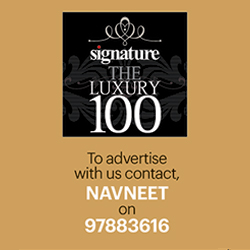
Michael Jeha, Managing Director of Christie’s Middle East, celebrates his 20th year with the renowned auction house this year. In an engaging interview, Jeha talks about the art in the Middle East, Leonard da Vinci’s Salvator Mundi and trends among other topics
Congratulations on your work anniversary with Christie’s. How would you describe your journey with Christie’s?
An exciting challenge, full of personal growth and the opportunity to meet and work with so many inspiring people, from my days in the valuations department in London through to overseeing the Middle East region – there’s always something new to learn.
How has the art world progressed over the last 20 years?
In 1998, the year I joined, Christie’s was bought by Francois Pinault and a new area for the then 232-year-old British institution started. The last extension Christie’s undertook was already 12 years old, when we opened our saleroom and offices in Hong Kong, back in 1986.
With the new ownership came a new strategy, enhance our engagement in Russia, opening an office and consequently a saleroom in Dubai, moving into mainland China and exploring the possibilities the internet had to offer. All this happened by remaining the world leading art business and offering the most exceptional works of art, up to the recent sale of Leonard da Vinci’s Salvator Mundi, which will soon arrive at the Louvre Abu Dhabi.
Please tell us what led to setting up Christie’s in the Middle East 11 years ago and how the auction house has changed the landscape with regard its area of expertise.
In 2004, then the management was invited to conduct the first charity auction in the Middle East and it was so taken by the country and the opportunities it had to offer, so that a plan to open a representative office was put into place within a couple of months and opened in 2005. In the following year the ever first art auction took place in Dubai and the rest is history: 450 new world auction records for artists from the Middle East, over 2500 works of art sold to national and international collectors and still holding market share as well as the highest price ever paid for a work of art by a Middle Eastern artist, Tanavoli at $2.8 million.
What are your views on the art scene in the Middle East?
In 2005 the art scene of Dubai was made by a handful of pioneering galleries. Since we have seen the gallery scene exploding, we had 12 years of consecutive art auctions as well as watch sales, two art fairs joined this UAE art market, museums have opened in different parts of the Middle East with the latest addition of the Louvre Abu Dhabi. This represents a great development in a very short time but even more important is the international appreciation of Middle Eastern art that happened in the last 12 years and of which I am very touched by.
What are the most popular auctions in the Middle East besides art?
Watches for sure – last March we offered the Patek Philippe made for King Farouk in 1944, which became the most expensive watch sold at auction in the Middle East but more importantly is that the watch itself was a vintage watch, indicating that the collector field of watches embraces the entire offering, from modern, to unique and vintage watches. The first watch sale ever to be sold 100% took place in Dubai in 2015 – a great achievement for the team!
How was 2017 for Christie’s Middle East?
I would choose two words – extraordinary and brave. The extraordinary can be put beside the purchase of the Salvator Mundi by Leonardo da Vinci and brave towards the expansion of Middle Eastern Art auctions to be held in London.
Up to 2016, which marked our 10th anniversary, we have held Middle Eastern Art auctions only in Dubai. Since 2017 we have alternated locations – in March in Dubai and in October in London, which proved to be a real success of our efforts proving Middle Eastern artists with an international platform and therewith to engage collectors from all nations to look, appreciate, understand and collect Middle Eastern art. And this concept can be even more enhanced by holding one auction a year in London.
What is the trend among collectors in the Middle East when it comes to art?
Established collectors from the region have progressed from collection art of their home category to collect international art and art from the region has become internationally renowned. Young collectors are entering the market with a more knowledgeable approach to the art of the region as well as the status of the art market and its do and don’ts. In all, it represents a very healthy market to which we remain fully committed, lately underlined by the two new junior specialists we hired.




